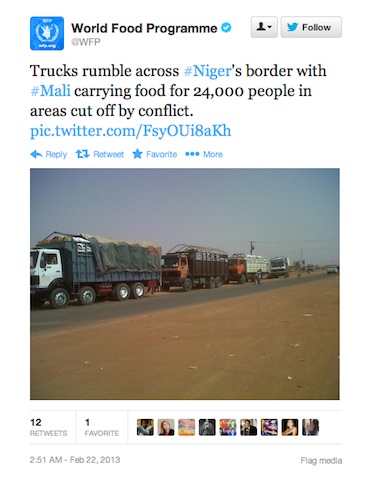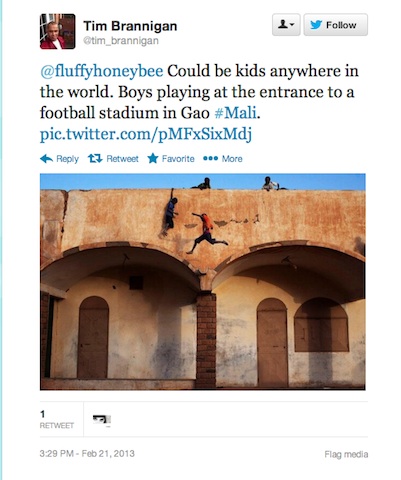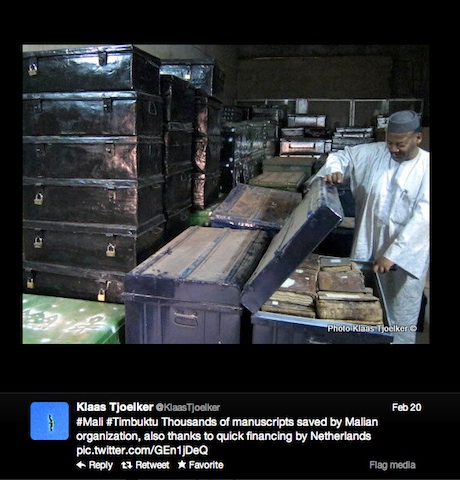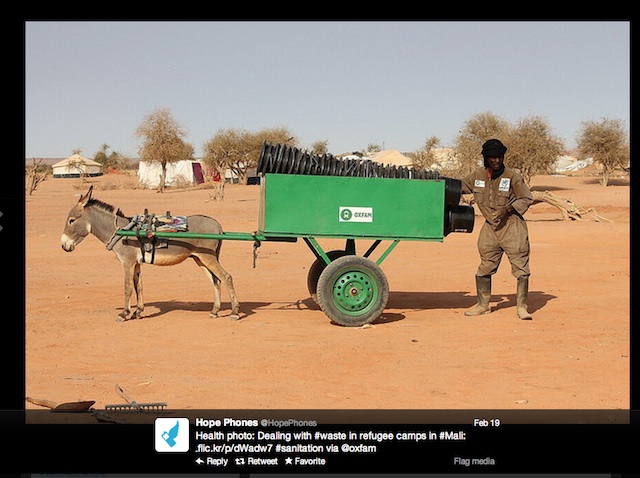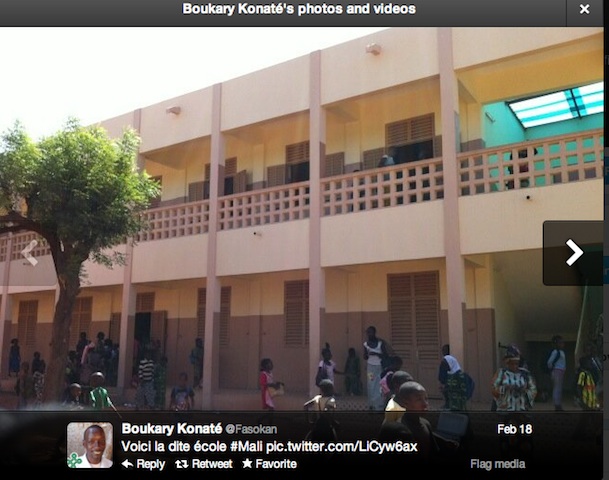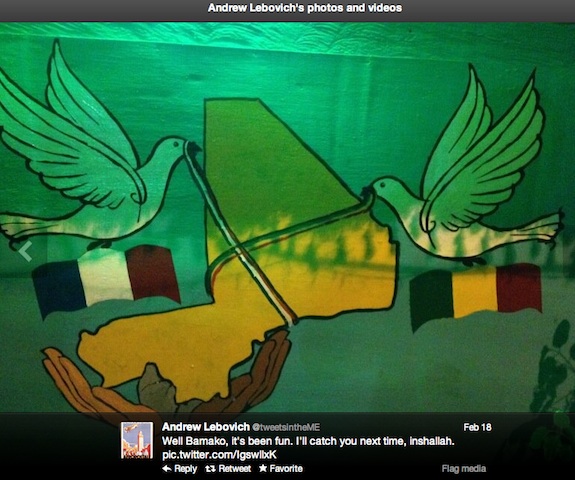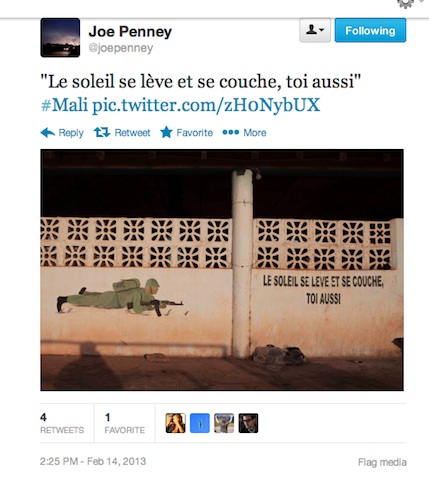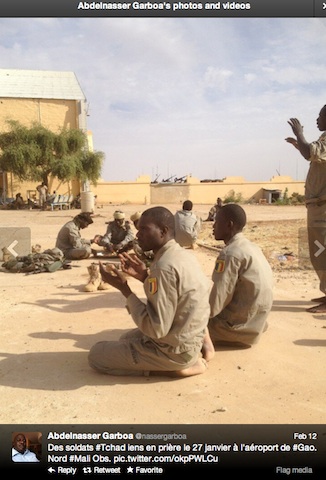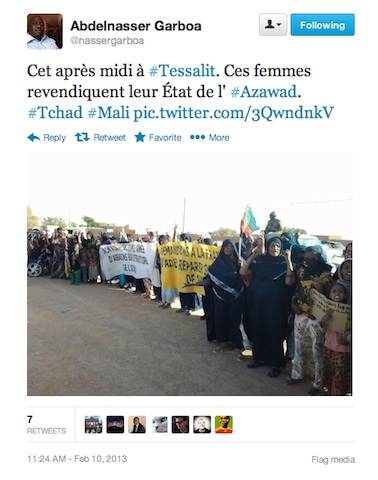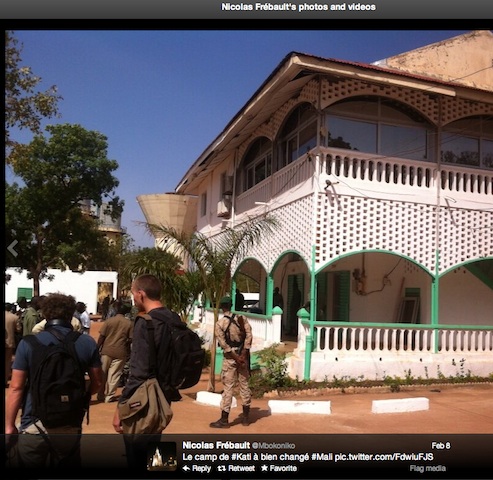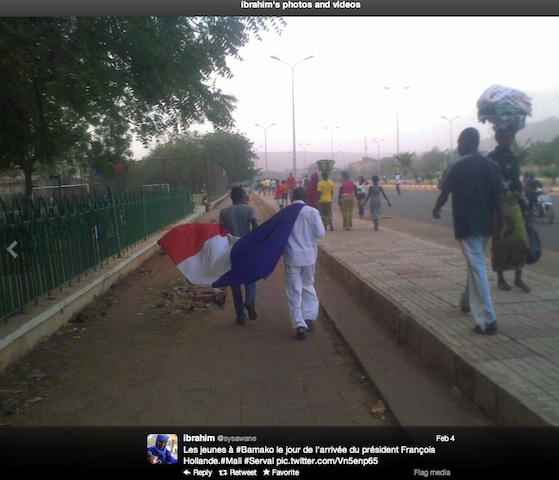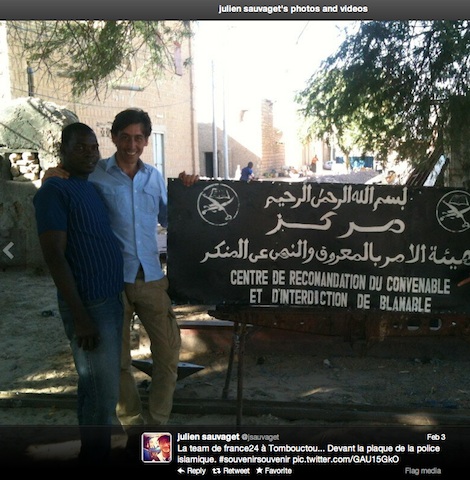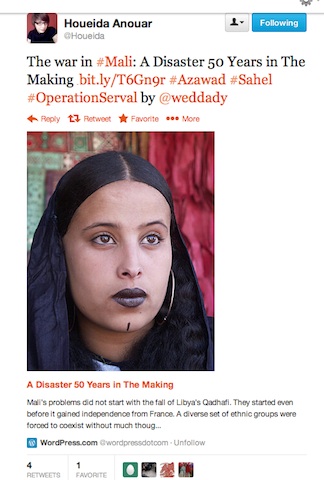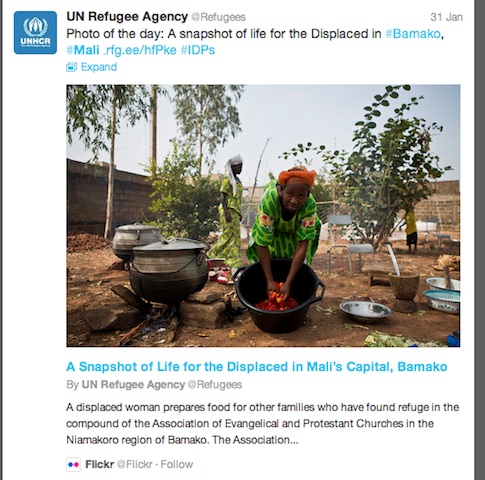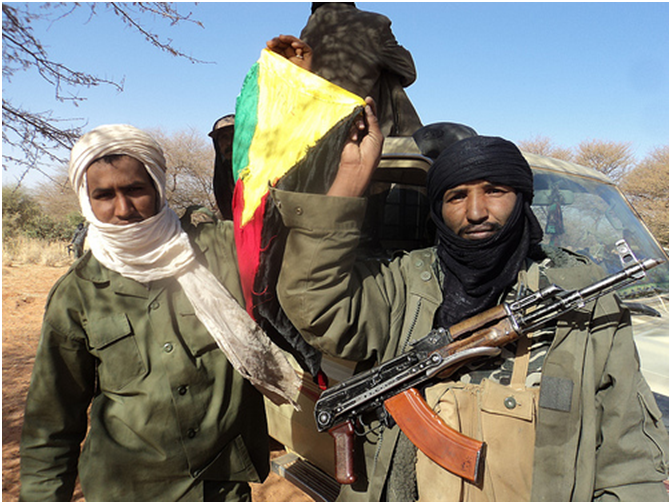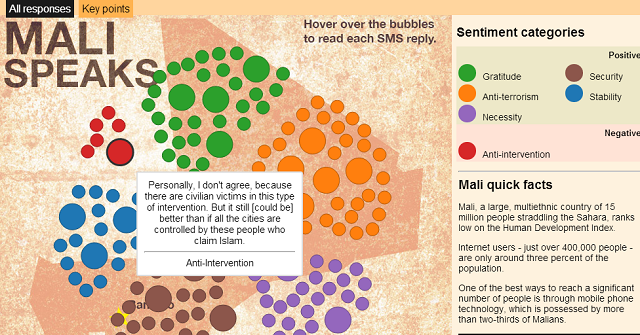War is also a field for photojournalists who try to tell stories through pictures. Some of them, far from Gao’s battles try to show daily life in the country. But they are not the only ones, bloggers, citizens and NGO’s as well also post pictures on the social network. Here are a Twitter pics’s review of pictures behind the war.
Tag Archives: Azawad
The beginning of the war in Mali has raised many questions about media coverage and ethics. In France, even if the main media criticized the army limits for the journalists, they did not escape the critics from foreign media. At this point of the conflict, the mainstream media in Africa and Middle East offers another point of view.
Covering a war is never easy especially when you have no choice but to respect the military limits. In order to avoid expected war coverage and to reach a largest audience, the TV channel Al Jazeera chose to interview the Malian publicopinion about what they think of the French intervention in their country. Rather than using vox pop, the media made an interactive map and asked two simple questions as in opinion polls: “Do you think France should have intervene in Mali? And why?” They gave a number so everyone could text a response or call. The journalists of Al Jazeera created a map organized with the main themes of the answers among which we have Gratitude, Security, Stability, Anti-terrorism and Necessity. The most interesting is the last one: Anti-intervention. The opponent voices to the French action have often been presented as coming from the Islamists or Jihadists. Last coverage of the conflict by French media was more based on “freeing” or “rescuing” the country. Stories are about militaries encountering relieved or traumatized citizens, each time French troops enter a city previously held by the Islamist militants.
Even the Malian media embrace the arrival of France with enthusiasm. But there are always some dissident voices as the 4% presented by Al Jazeera map show: the majority of them don’t agree because of the risks of civilian victims. Others tackled with a tough point also made by other close countries to the Mali: the reminiscence of French neocolonialism in Africa, which is perceived as an infringement to the sovereignty, an intrusion into the land.
The same Al Jazeera channel for instance, after stating that 96% of the interviewed population was in favor of the French intervention, made a TV show about Mali’s war without images. In this show, the opinion is clear, the lack of images for a journalist stuck in Bamako can lead “further from the truth” but also to biased information dependent of the French authorities on the field.
Listening Post – Mali’s ‘war without images’.Source: Al jazeera
“Some say Mali has been a “war without images”, and if that is because the French government want the story told their way then journalists have a problem. But the responsibility of reporters is more than just being in the right place at the right time. There is no such thing as observation without interpretation and words like ‘Islamist’, ‘atrocity’ and – especially – ‘terrorist’ are easy to say but not so easy to define. When journalists slip into the standard narratives there is plenty that does not fit in the picture.»
For other countries than France, the question of media coverage in Mali seems to raise a lot of issues. The International media organization Reporters Without Borders denounced in a statement released on January 16 the “media blackout” and spoke about a “war behind closed doors”. The tuniso-american journalist Yasmine Ryan spoke also the absence of any press conference held in Gao by the French or the lack of information about children soldiers in the rebel troops.
French and Malian troops consolidate gains. Source: Al Jazeera
“Guerrilla warfare is dirty, by its very nature. Just how irregular or dirty this war is, or whether it is a more conventional war, is difficult to judge with media kept so far from the conflict zone. »
But there is more to this critic than what we think. As in the interactive map, Yasmine Ryan also wrote about the controversial role of France:
“Foreign intervention is controversial for many Malians, particularly in the form of an operation where its former colonial occupier is playing such a key role. For most of 2012, the Malian authorities had requested international support – funding, weapons and training – for its own forces instead of bringing in foreign military muscle. »
In the countries close to Mali, such as Tunisia and Algeria, criticism have also been made. The newspapers were cautious and dubious about the aim of France at the beginning of the intervention. Algerian press editorials have underlined the loneliness of France in the intervention. Other African media fear a sinking of the conflict into civil war or guerillas. From across the hexagon, the media coverage of war in Mali mirrors and confronts the French media but they also give a complementary point of view and a balance. That is what we will try to do in this blog. We will give a voice to the African media and their point of views but also to the citizen journalists, bloggers and observers who can offer an insight into the backstage of Mali’s war. Of course we will also analyse the most dissident voices of this conflict, the Islamist militants war propaganda through Sahrawian media for instance.At last it’s important to underline that’s this criticism about French media is sometimes coming for not reliable sources such as propagandist PressTV, an iranian TV channel broadcasted in english.
Lilia Blaise
To know more about the conflict, here is the timeline made by the New York Times about the crisis in Mali.

